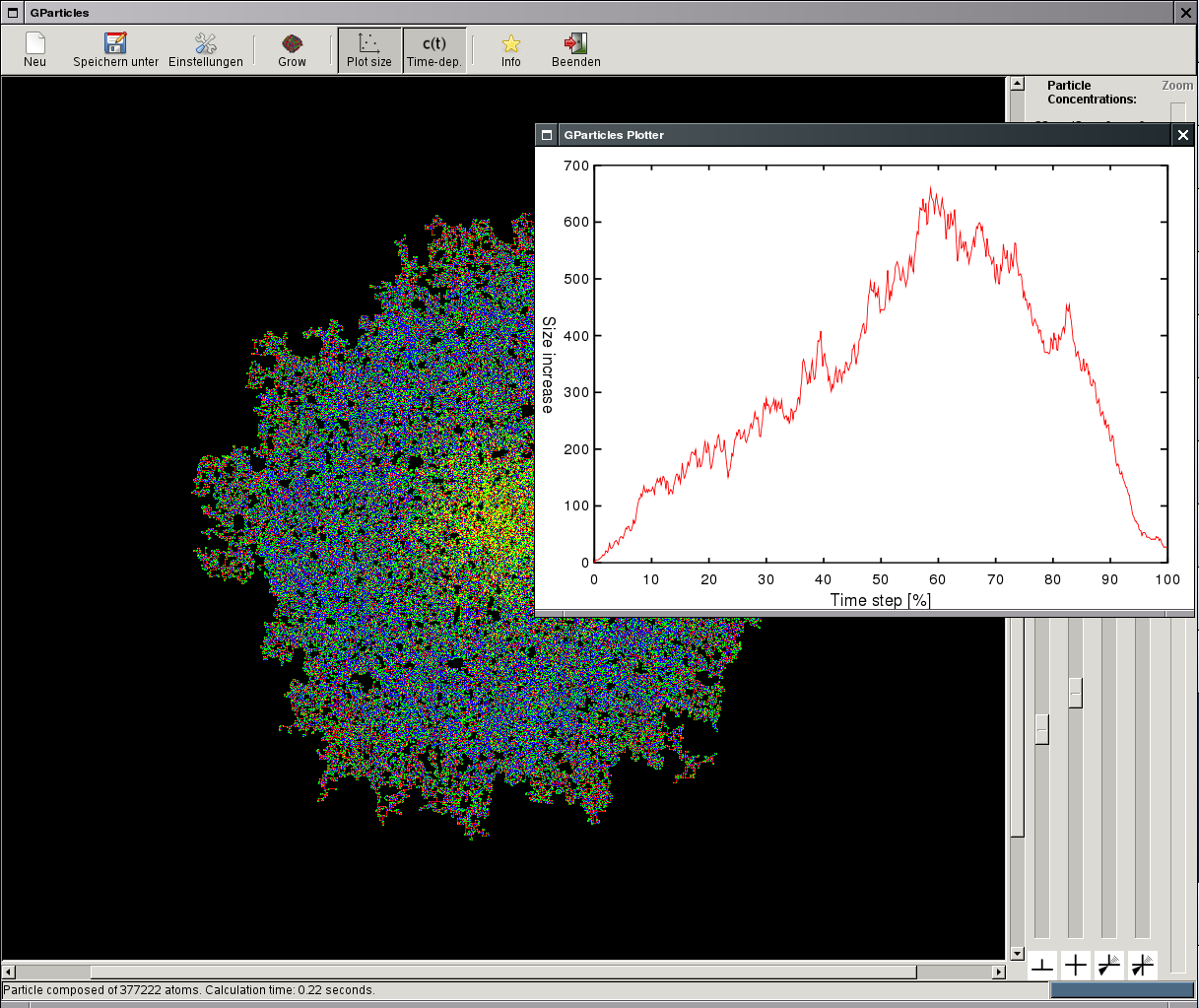

[Main page] [Sourceforge project page]
Nanoparticles are tiny particles with a size on the nanometer scale (1 nm = 0.000 000 001 m). Often composed of metal atoms, their shape is determined by the types of atoms they are composed of as well as the type of their fabrication.
GParticles aims to simulate the growth process and the shape of nanoparticles based on a simple model. In this model, the particle is represented as a two- or three-dimensional grid of atoms. A particle may be composed of up to eight different types of "atoms":








The shapes of the atoms determine how they can be connected to other atoms,
e.g. atoms of type
 can only be used to build a "line"-type particle, since they have only two
connectivities on opposing sides of the atom. The number and arrangement of
these connectivities determine the shape of a particle composed from these
atoms.
can only be used to build a "line"-type particle, since they have only two
connectivities on opposing sides of the atom. The number and arrangement of
these connectivities determine the shape of a particle composed from these
atoms.
GParticles allows the user to adjust the "mixture" (i.e. the concentrations) of the component atoms from which a particle is created. The growth process proceeds as follows: First, a single atom is placed in the middle of the grid. Then, additional atoms are connected to this atom (with a random orientation). The types of the additional atoms are determined by the user-selected relative concentrations of the component atoms.
GParticles is written in C++ using the GTK+/gtkmm toolkit. The intended target platforms are Unix-type systems, but it can be compiled under Windows as well.
From the main window, if you select 'New' from the toolbar you can choose between two different modes of calculation: 'Single particle' and 'Set of particles'.
'Single particle' renders one particle at a time. This is the default. If you hit the 'Grow' toolbar button, you can see the rendered particle immediately in the window. Additionally, you can enable a time-dependent change of the concentrations of the components by toggling the button 'Time-dep.'. The corresponding 'concentration profile' can be changed by hitting the 'Preferences' button. In the options window, you should have a look at the tooltips showing up if you move the mouse pointer over certain widgets.
To be continued...